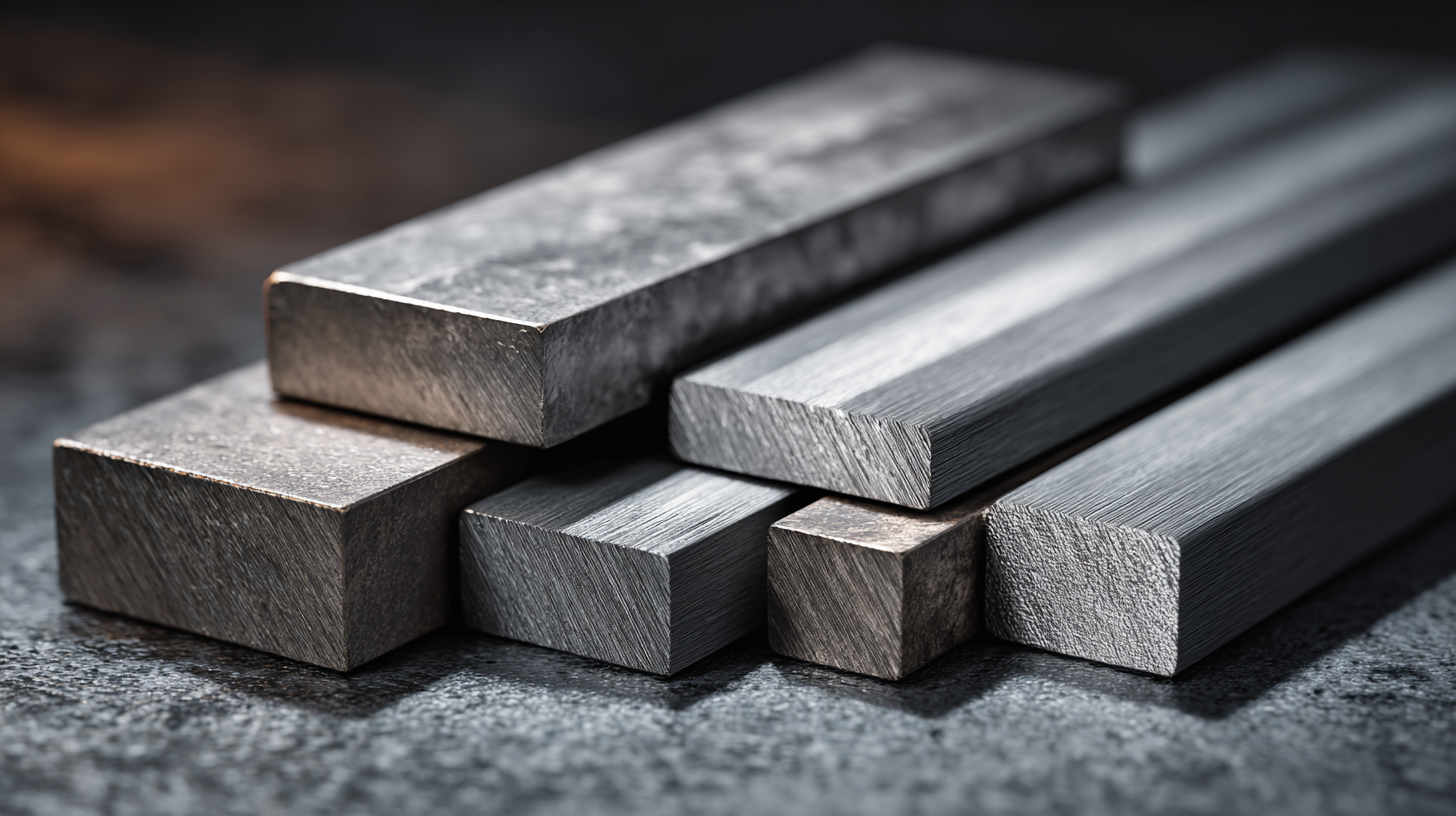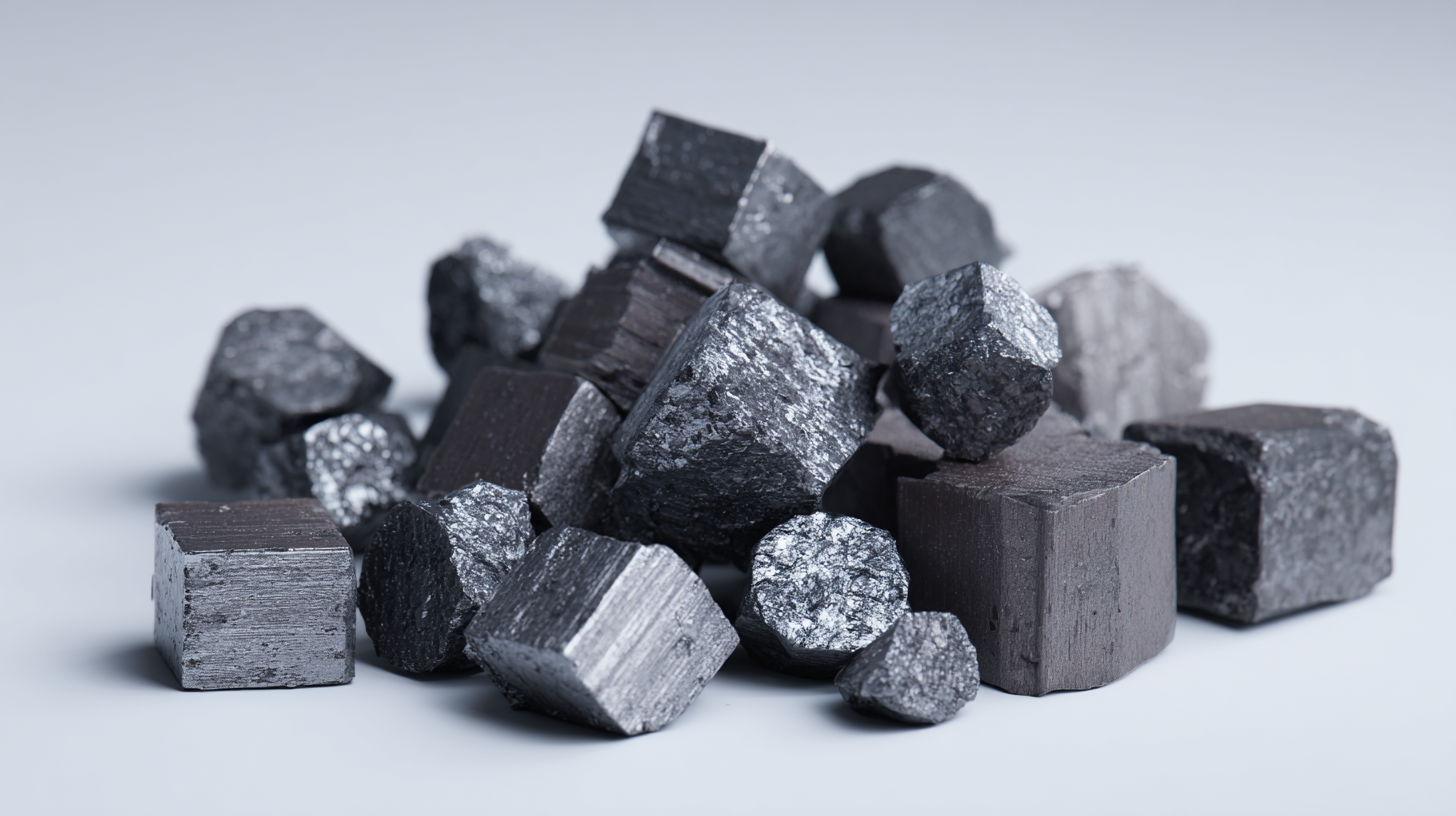Leave your message now to get your free sample and discount price
Leave your message now to get your free sample and discount price
Tungsten Carbide Metal, renowned for its unparalleled hardness and resistance to wear, has been a staple in various industries, including manufacturing, mining, and construction. According to a report by Market Research Future, the global tungsten carbide market is projected to reach USD 21.8 billion by 2027, growing at a CAGR of 5.7%. This staggering growth reflects the increasing demand for high-performance materials that can withstand extreme conditions.

As global buyers navigate the myriad of options available, it's crucial to understand the unique characteristics and applications of different tungsten carbide products. This comprehensive comparison aims to unveil the power of tungsten carbide, equipping buyers with the insights needed to make informed decisions in a competitive marketplace.
Tungsten carbide, an alloy comprised of tungsten and carbon, stands out in the metals market due to its exceptional hardness, durability, and resistance to wear. According to a recent report from MarketsandMarkets, the global tungsten carbide market is projected to reach USD 22.98 billion by 2027, growing at a compound annual growth rate (CAGR) of 6.0%. This remarkable growth underscores the increasing demand for tungsten carbide in various applications such as cutting tools, mining, and construction, highlighting its pivotal role in industrial processes.
The primary benefits of tungsten carbide for buyers lie in its unparalleled toughness and longevity. With a hardness rating of 8.5 to 9 on the Mohs scale, tungsten carbide tools outlast traditional materials, leading to decreased downtime and maintenance costs. Additionally, its resistance to corrosion and high temperatures enhances performance in challenging environments. A report by ResearchAndMarkets indicates that the rise in precision machining and the need for high-performance materials are primary drivers of tungsten carbide's popularity. As global buyers seek reliable and efficient solutions, understanding the properties and benefits of tungsten carbide becomes essential for making informed purchasing decisions.
Tungsten carbide is a versatile and durable material that has gained popularity across various industries due to its exceptional hardness and wear resistance. This composite, made from tungsten and carbon, is available in different grades, each tailored for specific applications. For instance, the ASTM B777 standard classifies tungsten carbide into several grades, such as C2, C4, and C6, where the C2 grade is utilized in applications requiring lower wear resistance. Conversely, the C6 grade, often used in mining and drilling equipment, boasts a hardness rating of 1500-1700 HV, making it ideal for high-impact environments. According to a 2021 market analysis by Grand View Research, the global tungsten carbide market is expected to reach $38.7 billion by 2027, reflecting its growing significance in sectors like manufacturing, construction, and aerospace.
In applications ranging from cutting tools to jewelry, the selection of tungsten carbide grade can significantly impact performance and longevity. For example, in the automotive industry, tungsten carbide coatings are used to enhance the longevity of engine components, with studies showing they can increase lifespan by up to 40% under harsh conditions. Similarly, in the oil and gas sector, tools fabricated from high-grade tungsten carbide are crucial for reducing downtime and maintenance costs. The International Tungsten Industry Association (ITIA) highlights that about 60% of all tungsten carbide production is directed towards tool making, emphasizing the material’s pivotal role in maintaining efficiency and effectiveness across industries.
When considering the purchase of tungsten carbide products, understanding the cost dynamics can significantly impact your investment. Tungsten carbide is known for its hardness and durability, making it a popular choice in various industries, from jewelry to industrial applications. The price range can vary based on factors such as purity, type, and manufacturing process. Generally, higher purity levels and specialized types, like those used in machining, command a premium price.
Tip 1: Always compare quotes from multiple suppliers before making a decision. This not only helps in finding the best price but also provides insights into the quality of different products available in the market.
Additionally, it’s essential to factor in the long-term savings offered by tungsten carbide's impressive lifespan. Although the initial costs may seem higher compared to other materials, the reduced wear and tear can lead to lower replacement frequencies, ultimately making it a cost-effective choice over time.
Tip 2: Investigate warranty and return policies associated with your purchase. A robust warranty can indicate a manufacturer’s confidence in their product, while flexible return policies offer peace of mind in case the item doesn’t meet expectations.

When sourcing tungsten carbide, reliability in suppliers is crucial for achieving both quality and cost-effectiveness. Global buyers must deploy strategic approaches to identify trustworthy manufacturers. Start by conducting thorough market research; understanding industry trends and competitor pricing can help in evaluating potential suppliers. Look for suppliers with a solid track record and positive reviews from previous customers. This will give you insights into their reliability and the quality of their products.

Additionally, consider establishing direct communication with potential suppliers. This can help clarify potential concerns regarding product specifications, delivery timelines, and post-purchase support. Don't hesitate to ask for samples or references to assess both product quality and the supplier's responsiveness.
The manufacturing landscape for tungsten carbide is undergoing significant transformations, driven by advancements in technology and an increasing demand for high-performance materials across diverse industries. One of the most promising trends is the adoption of additive manufacturing techniques, enabling the production of complex geometries that were once challenging or impossible to achieve with traditional methods. This innovation not only enhances design freedom but also reduces material waste, making the process more eco-friendly and cost-effective.
Moreover, the integration of smart technologies into tungsten carbide production is reshaping quality control and efficiency. Manufacturers are increasingly utilizing IoT devices and AI-driven analytics to monitor processes in real time, ensuring that production standards are met consistently. These innovations lead to improved product durability and performance, catering to the stringent requirements of industries such as aerospace, automotive, and mining. As global buyers seek reliable and cutting-edge tungsten carbide solutions, staying abreast of these trends will be crucial for making informed purchasing decisions in the future.
